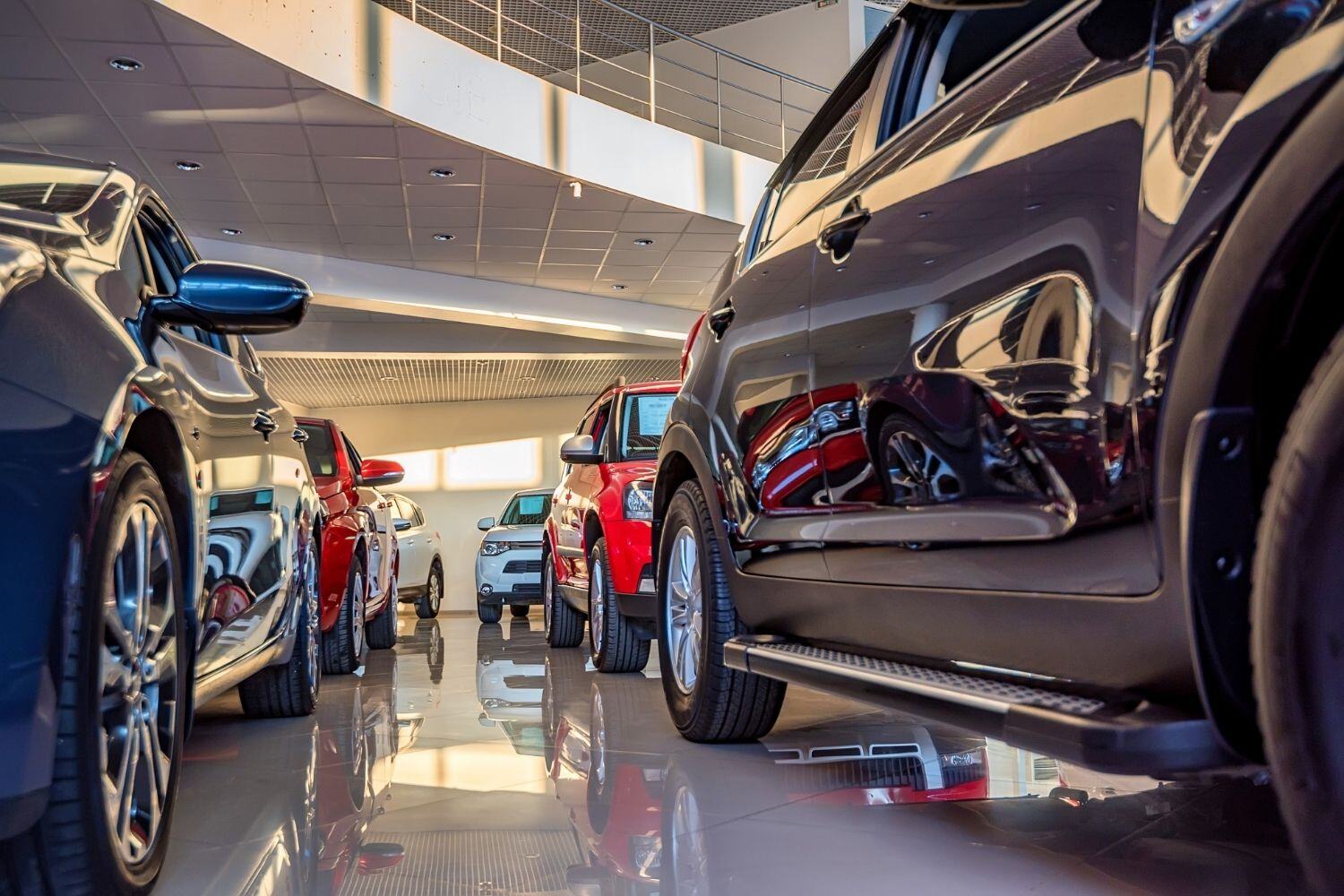5 Automotive Industry Trends in 2020 (Updated for 2021)
 Simon Porri
·
4 minute read
Simon Porri
·
4 minute read
The automotive industry has always been driven by innovation and technological advancement. And in this increasingly ecologically and economically conscious age, that’s more apparent to the consumer than ever.
But it’s not only in the march toward sustainability and affordability that the auto industry has blazed a trail of innovation. Both in the realms of vehicle manufacture and automotive retail, auto brands of all shapes and sizes strive for excellence by leveraging new technologies. Necessity is the mother of invention, and with dealership profitability in the UK at less than 1%, brands need to deliver greater value to consumers who know they have the luxury of choice.
Here, we’ll take a look at 5 automotive industry trends which will dictate the vehicle production and retail landscape in 2020. With the right tools, manufacturers and dealerships alike can turn challenges into opportunities and adversity into advantage.
#1 – Online customers and frictionless expectations
The digital realm continues to remake the world of retail, delivering frictionless experiences for consumers. Indeed, today’s consumers have become accustomed to convenience and can experience significant friction when brands don’t deliver it.
It stands to reason that the online experience is a significant part of the research phase of purchasing, with 80% of customers researching prospective vehicles online. However, more and more retailers are developing and refining their blended approach to retail, delivering seamless transitions between online and in-dealership interactions for an integrated “bricks and clicks” approach. As “virtual dealerships” and online video play an increasingly large part in the buyer experience, customers have high expectations by the time they walk into a dealership in 2020.
Here, business intelligence tools are imperative in delivering a frictionless and satisfying experience. They can prevent customers from needing to repeat themselves or provide information to sales professionals that they’ve already submitted online. They can provide a central repository of data to support on-site teams in delivering that all-important first impression in the dealership.
They can also facilitate easy and satisfying communications with customers when arranging test drives, conducting transactions and checking in to make sure that the customer is happy with their new vehicle and that there are no issues that need to be followed up by the aftersales team.
#2 – Driverless and electric vehicles
New technologies continue to make electric vehicles available and affordable to a broader populace. Industry analysts are confident that 2020 will be the year of the electric car as trusted manufacturers bring a wealth of affordable new models to market, as well as delivering electric-powered versions of familiar favourites. As the government invests over £10 million into establishing up to 3,600 new vehicle charging points this year, and electric vehicle prices drop below £7,000 (the Renault Twizy costs just £6,690 + battery lease), the barriers to electric vehicles are slowly eroding for many consumers.
The prospect of automated vehicles is one with which the majority of consumers are also growing increasingly comfortable in 2020. As 5G internet and the Internet of Things become more commonplace, autonomous vehicles have a steadily expanding infrastructure. Indeed, it’s estimated that by 2030, as many as 15% of all cars sold will be fully autonomous. While we certainly shouldn’t expect to see autonomous vehicles traversing every street by the end of the year, it’s definitely an exciting trend to watch out for.
#3 – Purpose-built vehicles
Speaking of autonomous driving, the coming decade marks a change in perspective from vehicle manufacturers and retailers alike — a shift away from the driver and towards the passenger. With the prospect of automated cars comes the possibility of purpose-built vehicles. Within as little as 5 years, consumers will be able to buy or lease “robocabs” with flexible interior uses based around their needs. They may customise their vehicle’s interior to use as a workspace, for relaxation or even for socialising as an automated driver takes care of the business of transportation.
Cost-efficient technologies like 3D printing and the use of fewer mechanical parts, the idea of purpose-built, customised vehicles could be an increasingly common sight. However, it’s unlikely that these will be purchased by consumers. They will be the preserve of ride-sharing services and enterprising business people. As such, retailers will need to adapt to cater to an emerging demographic and be able to meet their needs effectively. And those that get ahead of the curve can find themselves at a distinct advantage in a changing retail climate. Which brings us to the next item on our list.
#4 – Service-based models of consumption and declining car ownership
The sharing economy continues to change the face of vehicle retail and even, to a certain extent, the face of vehicle manufacture. With convenient Transportation as a Service (TaaS) resources like ZipCar and Car2Go, as well as Uber and other ride-sharing platforms, more and more drivers are choosing to eschew car ownership.
In order to cater more comprehensively to the growing TaaS market, dealerships need to rethink the financing packages they offer to this new, fast-growing type of customer. The market has become awash with all-in-one financing packages aimed at this kind of customer, incorporating payments, insurance and maintenance costs to deliver a more comprehensive and frictionless service for these customers. These are the kinds of services that dealerships will need to offer to remain competitive in this changing landscape.
The right business intelligence tools can help them to track the growing proportion of their market that these customers represent, turning data into actionable insights. This will allow dealerships to cater to their needs proactively, giving them the inside track over their competitors. Of course, TaaS may be more of a fad than a trend, which is why brands benefit from being able to keep an eye on its impact on their market at dealership level. This can prevent them from over-investing in provision for a comparatively small market share.
#5 – Regulatory and environmental changes
Today’s consumers are growing increasingly environmentally and ethically aware, especially those of the millennial generation. In fact, almost 75% of millennials are prepared to pay more for sustainable products. This increase in consumer demand for more eco-friendly vehicles is reinforced by regulatory and legislative changes as well as the industry’s own targets.
As new carbon emissions regulations established in January continue to change the face of the UK and European auto industry, brands need to keep demonstrating their commitment to sustainability to maintain their appeal to customers. Across the brand, and even at dealership level, Original Equipment Manufacturers (OEMs) will need to maintain a proactive approach to their key environmental metrics and KPIs as they strive to out-perform one another and innovate their way towards a more sustainable industry.
As such, they’ll need to rely on business intelligence tools to give them granular insights into the vast quantities of data needed to ensure an environmentally competitive edge and avoid negative publicity like Volkwagen’s emissions scandal.
How will you retain a competitive edge in this fast-changing landscape?
While this is an extremely exciting time for those in the automotive industry, the current technological, ecological and economical landscape represents a set of very real challenges for vehicle brands. They will need to remain agile and proactive as the trends slowly separate themselves from the fads and the novelties. By using the right business intelligence tools, dealerships and OEMs can prevent themselves from drowning in a deluge of data and glean the actionable insights needed to maintain a competitive edge.






